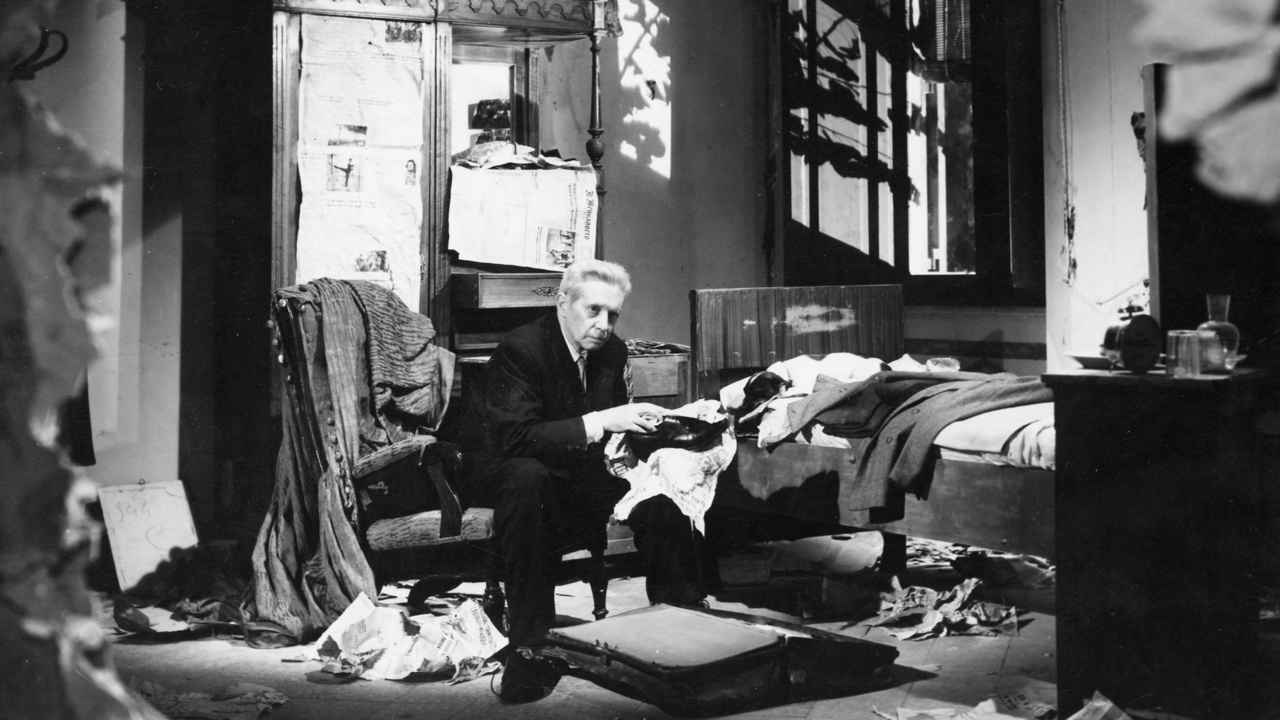Vittorio de Sica holds a significant place in both Italian and world cinema as an actor and director. However, there are two films that set him apart from others and place him among the most influential directors in history. The Italian Neorealist movement, which was to shape cinema history and began with “Rome, Open City,” served as a vehicle for many beautiful films during its 10-year lifespan. The most important of these was Bicycle Thieves, the signature film of Italian realism and referred to as the father of drama, which was brought to the screen by Vittorio de Sica’s camera. The director, who left his mark on the most important film of the 10-year movement, also left his signature on the film that ended the movement: Umberto D.
The director, who fully utilized the amateur characteristics of the movement in both films, left his mark on two unforgettable films in history. Especially considering that he was an actor in the “white telephone films,” which were considered the “government-side” films of his time, it is commendable that he changed his mind and started telling the truth.

Umberto D. is a film that I would like to highlight, as it never reached the popularity of Bicycle Thieves, the most important film of the movement. I can even say that its value is not fully appreciated. When I think of drama, Uncle Umberto is perhaps the first person that comes to mind. His drama should be taught as a lesson on how to depict real-life and contemporary issues in such a true-to-life manner. The film leaves an indescribable pain in your heart and contains no falsehood or melodrama. It is a sincere and pure portrayal of reality, a fitting closing for the era.
There is a serious crisis in Italy, as is well-known, due to the war. Even those who are capable and able-bodied are struggling to find work during this challenging time, and elderly Umberto is no exception. Unable to find a job and with an insufficient pension to cover his rent, Uncle Umberto begins selling his valuable books to make ends meet. His only concern is to survive. Aside from his dog Flike, Umberto has no friends, and he becomes increasingly hopeless and disconnected from life.
The screenplay, written by the legendary screenwriter Cesare Zavattini, depicts the Italy of the time through the eyes of an elderly person for the first time. The renowned screenwriter, who also wrote the screenplay for Bicycle Thieves, portrays the reality of the street in a way that will grip the heart. Zavattini, who was a journalist by profession, turned his powers of observation into some of the most influential films of the period. Director Vittorio de Sica also adapted well to the period when the camera went out into the street, and natural light replaced the studio. In fact, the film’s lead actor, Carlo Battisti, was not an actor at all, but a physics professor whom de Sica met on the street and whose face he liked. The film was dedicated to de Sica’s father, perhaps because it reminded him of his own memories.
The film is special to me, as it is a much deeper and more unforgettable film than the well-known Bicycle Thieves. The story of Uncle Umberto and his dog Flike is painfully realistic. The helplessness of an elderly man, his weakness and inability to cope, and his attempts to survive despite everything, while still trying to care for those around him, especially his dog, is both heartwarming and heartbreaking. The fact that even able-bodied people struggle to find work and are reduced to selling their own sheets, while an elderly man struggles to survive during a crisis is one of the best examples of the difficulties of the period. Young people live, but what about the elderly?

Especially the ending of the Umberto D. contains a reality that I wanted to reject. In moments of despair, we can act against our ethical values. Sometimes, even if it is not pleasing to the eye or ear, we must do what is right. Wisdom and experience lie here. The decision Umberto takes in the end may be a decision that many people had to make at that time. Although he loves his dog more than anything, it is obvious that the ship is sinking, and he does not want to drag his dog down with him. Umberto mistreats his beloved dog to make him leave. At first, Flike does not want to leave, but eventually turns around and goes. With his departure, Italian Neorealism ends. The movement’s final film ends with Flike disappearing into the horizon.
Umberto D., which Ingmar Bergman called the best film he had ever watched, unfortunately, did not receive sufficient attention as an Italian Neorealism film nowadays, as I mentioned above. It is one of the rare drama films where everything is realistically depicted, free from fake sentimentality and dazzling exaggeration.
When it’s over, it has a structure that nails you to your seat and leaves a vast pain inside. With each step Flike takes away, Umberto’s hopes also drift away. These are actually the seeds of the hopelessness that the war has instilled in society. Whenever I think about Umberto’s helplessness and Flike’s departure, I feel down. The worst part is that you can’t just call it a film and move on. Because Zavattini’s story is the essence of the era.

Cast & Crew
director: Vittorio de Sica
writers: Cesare Zavattini
starring: Carlo Battisti
ITALY | 1952 | 89 MINUTES |
